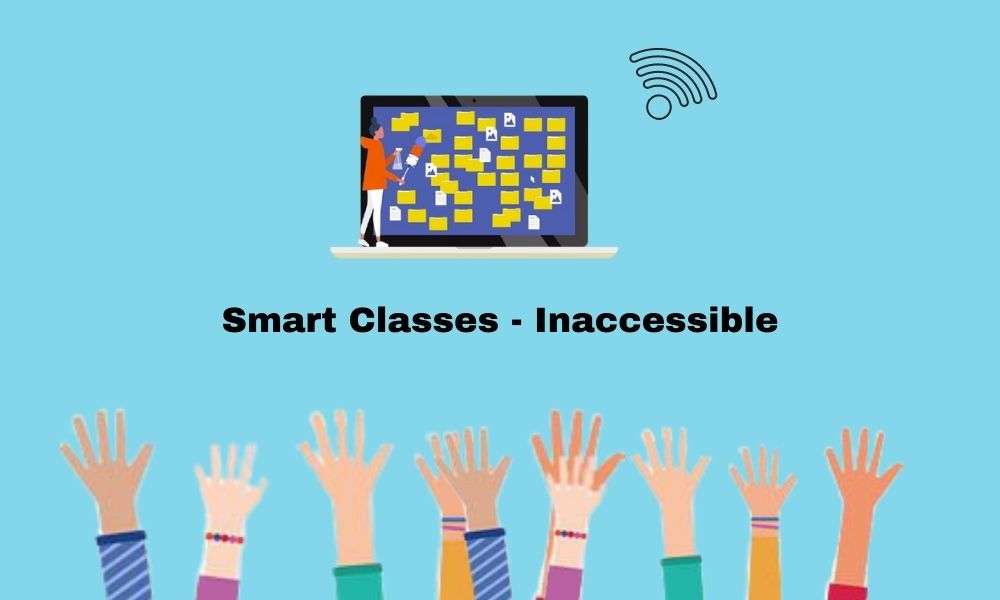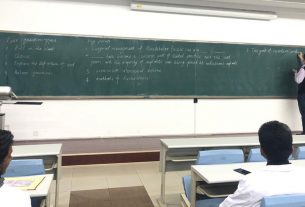Lack of space, funds and training prevent college administrations from creating smart classrooms.
Bengaluru; Classrooms in city government colleges are yet to be equipped with digital infrastructure for teaching-learning process as directed by the state education department. Untrained professors and lack of maintenance of smart classrooms adds to the problem.
“We have only one smart classroom for our whole college but it is not up to the mark,” said Narayanappa, Principal of a Government PU College in the city. The classroom has a projector and one computer, including Wi-Fi for the whole campus, but doesn’t have suitable rooms for it. “Proper light, sound, ventilation, seating, and a stage are needed for these facilities to be used, but we do not have them,” he added.
To promote digital learning and for better teaching-learning management in colleges, the state government had announced in February 2021 that 2,500 classrooms of higher education will be converted into smart classrooms. The classrooms are meant to have high-speed internet, projectors and a Learning Management System (LMS) to upload academic content, and classes are to be conducted with Power Point Presentations (PPTs), etc.
Experts and researchers agree that use of such digital methods for the teaching process increases opportunities for learning. “Digitalization will allow institutions to cater to the needs of different children as not every student will learn in the same way,” said Riya Sapra, a fellow at Teach for India. While one student might understand lessons by listening to them, others might need visual aids and more interactivity to understand, which can be made possible by smart classrooms, she added.
However, some colleges lack the required space and funding to build new classrooms and convert existing ones into smart classrooms. “We have one computer and a projector but no room to install it,” said Ramesh, principal of another government college. They received funds only once for procuring these facilities from the state education department. Additionally, each classroom has about 60 children who are very notorious; therefore, it will be difficult to maintain these facilities, he added.
While most professors in a government college in the city agree that use of smart classrooms saves their energy, time and eases their memory while teaching, some of them have not been trained to use these facilities which adds to the problem, according to Dr. B. Chandrashekhar, principal of the government college. “The teachers are not always comfortable and cannot be expected to use and operate all the latest digital technology,” said Jayaprakash, an education expert.
He added that there is always a digital gap in learning and teaching, even from the teachers’ side, which needs to be bridged. The college has 20 smart classrooms that use projectors and LMS to upload and download e-content but lack uninterrupted power supply for the facilities to run continuously.
The quality of digital infrastructure in all colleges must be improved, and there should be equality in learning, said Jayaprakash. “While top city colleges will have all the internet facilities, the colleges in rural areas will not have the same connectivity and access to technology,” he added. In fact, research reveals that, from an infrastructural point of view, all educational institutions cannot be ready or willing to perform online technology-based education and evaluation.
Surveys and studies need to be conducted in all colleges to figure out the status of students’ learning after online classes due to Covid, said Jayaprakash. “Otherwise, there will be a huge impact on the recruitment process for employment of these students,” he added.
Currently, 2,500 classrooms have already been converted into smart classrooms, and plans for creating 5,000 more of such classrooms are under way, according to data provided by the Department of Collegiate Education. The department is yet to get funds for 5000 more smart classrooms.






